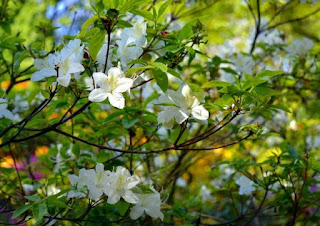 |
| This post may help cut down the number of tissues you need this season. |
Examine the trees and shrubs that you have in your yard because varieties are known to trigger allergies more than others. Common tree offenders are oaks, birch, elm, pecan, poplar, walnut, olive, sycamore, and willow trees. Instead, a safer choice can be an evergreen like a fir tree that has softer needles, silver oak, redbud, plum, pear, magnolia, crape myrtle, and palm are just a few examples of what may work to grow in your particular region of the country.
Shrubs often can are planted closer to the house than trees, which can really irritate if you have the wrong ones releasing those pollens. Bad shrubs for allergies are some such as a privet shrub or hedge, juniper, elderberry, and Rhamnus (buckthorns). Ceanothus are another with more than 35 types to consider.
 |
| Oak trees are one of the worst allergy offenders. |
A safer bet for shrubs is your oleander, boxwood, evergreen shrubs like the nandina and pyracantha, hibiscus or the yucca. The only problem with the yucca is that my deer do like to dine on their flowers and practically everything else growing in my yard, including one cactus flower that I got to enjoy once.
 |
| Azalea is a better option for those prone to allergies. |
Here’s something else allergy sufferers should keep in mind, the pollen count is always at its highest levels after rain or at night. Thus, you may want to avoid outdoors if possible or to keep windows closed at night to safeguard against it.
Of course, it always could be worse. Some people have what is called allergic rhinitis with allergic symptoms all year round. Therefore, you might count yourself as lucky if a seasonal allergy is what you’re going through now. At least, your misery ends with the first frost while some of us continue to experience daily symptoms.
